Plants for pollinators – 10 of the best for a blooming garden
Discover the best plants for pollinators to help you create a pollinator friendly garden that is healthy and thriving
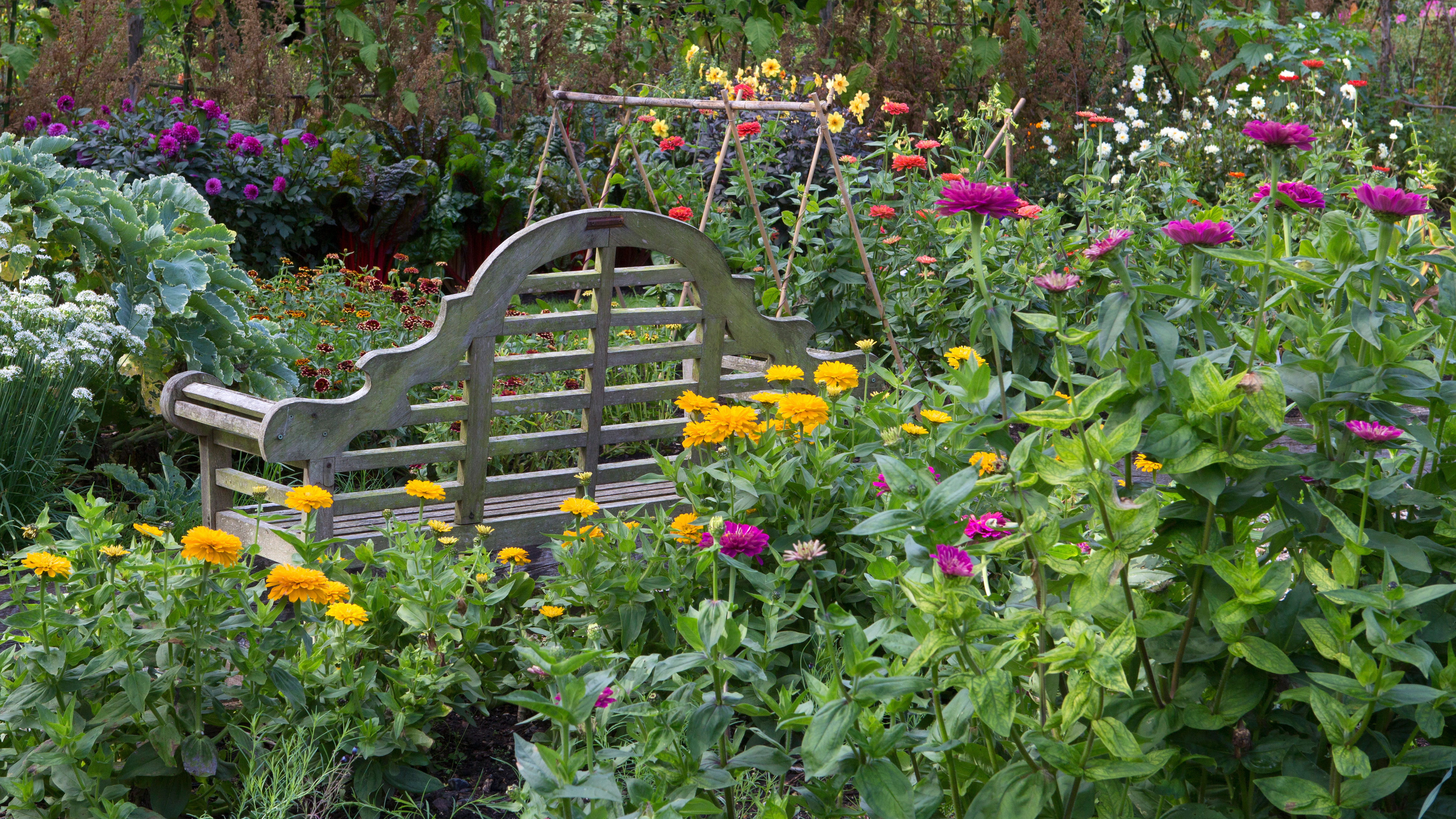
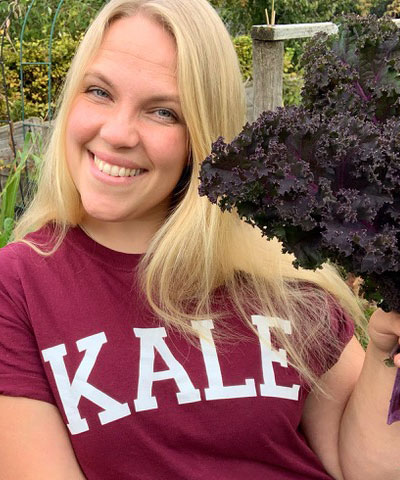
Growing plants for pollinators is a great way of creating a garden that is both beautiful and truly buzzing with life. Pollinator friendly gardens are full of flowers, making them a joy for us and a vital refuge for our beloved pollinators.
Our gardens can become powerful tools for promoting biodiversity and helping local wildlife, and an important element of wildlife garden ideas is choosing plants that will encourage bees, butterflies, wasps, hoverflies, and other pollinators to visit. We not only cater to them, but also all the birds that eat them, and the plants that need pollinating to set fruits and seeds.
Plants for pollinators
There are many great plants for pollinators that we can grow in our gardens and you can even choose among the best container plants for pollinators. As well as particular flowers that attract bees or others that are known to attract butterflies, the choice of plants for pollinators is vast and will to some extent depend on what will grow well in your specific garden conditions.
It’s important to provide habitats for pollinators, too. Plants can do this, such as planting a wildflower meadow, but you may also want to consider building a bee hotel for solitary bees and beetles, building a pond for hoverflies to lay their eggs, or leaving a patch of weeds to feed caterpillars.
When catering to pollinators it is important to remember that pesticides and even some herbicides can be very toxic to them. Key to sustainable garden ideas is avoiding the use of pesticides. Some nurseries treat their plants with pesticides, some of which are systemic and stay inside the plant, so please choose carefully if you are buying plants specifically for pollinators. It’s usually safer to grow from seed, if you can.
1. Milkweed – Asclepias spp.
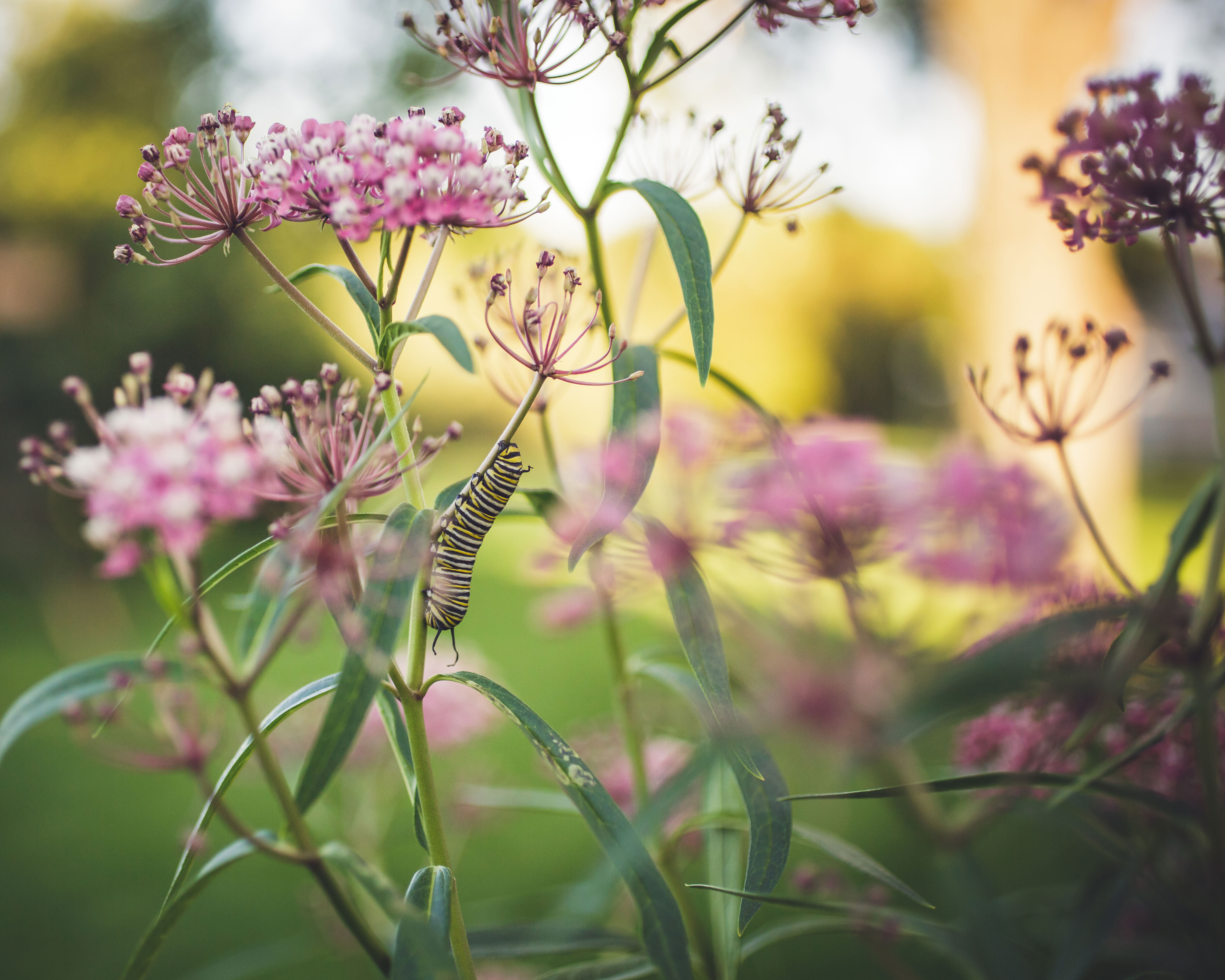
Milkweed is well known as the food source of the Swallowtail Butterfly caterpillar and also a popular plant for birds. It has delicate flowers in bright, showy clusters and is available in a range of colors. Don’t let the name put you off – this is not a weed, but a beautiful and valuable wildflower, native to North America.
A plant for pollinators suited to growing in Zones 3–9, milkweed grows naturally in wooded areas, so will prefer a spot in light or partial shade.
It can be grown from seed by scattering seeds thinly in a tray of potting compost in spring. Cover with a quarter inch of compost and keep the medium damp. When the seedlings have their first true leaves, transfer them into their own pots or modules. When they are a few inches tall they can be planted out in the garden.
2. Zinnia
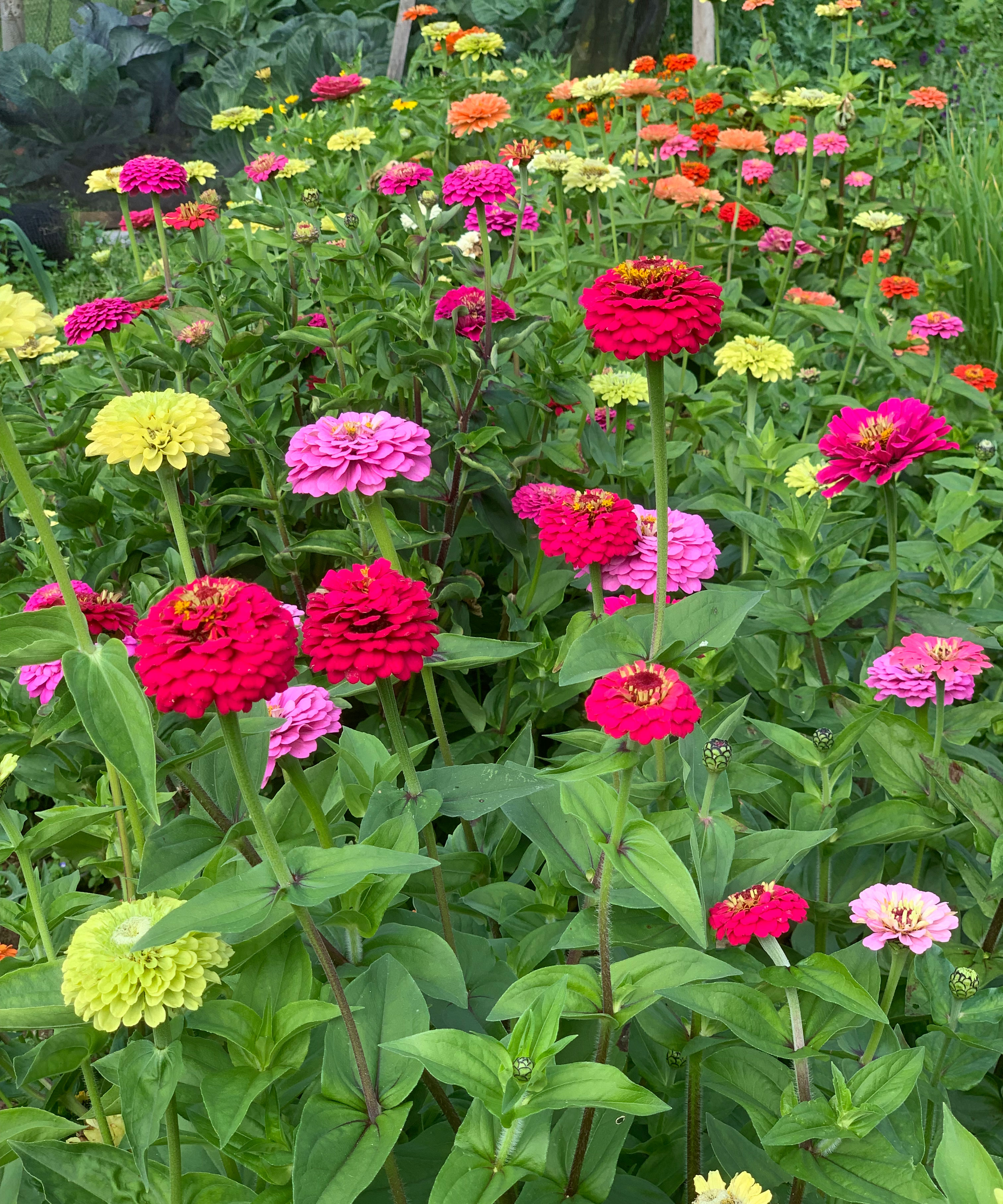
Zinnias are a bright and showy annual plant with large flowers and a huge range of colors. They are a great food source for bees and hoverflies and can brighten up any garden.
Suited to growing in Zones 2 – 11, it is easy to gets to grips with how to grow zinnias.
They prefer full sunshine so plant them in a sunny spot and remove dead heads to encourage more flowers. They should continue to flower all summer and into fall providing many months of nectar to our wonderful pollinators.
If you learn how to collect zinnia seeds you can enjoy an endless – and free – supply of these beautiful blooms.
3. Lavender – Lavendula spp.
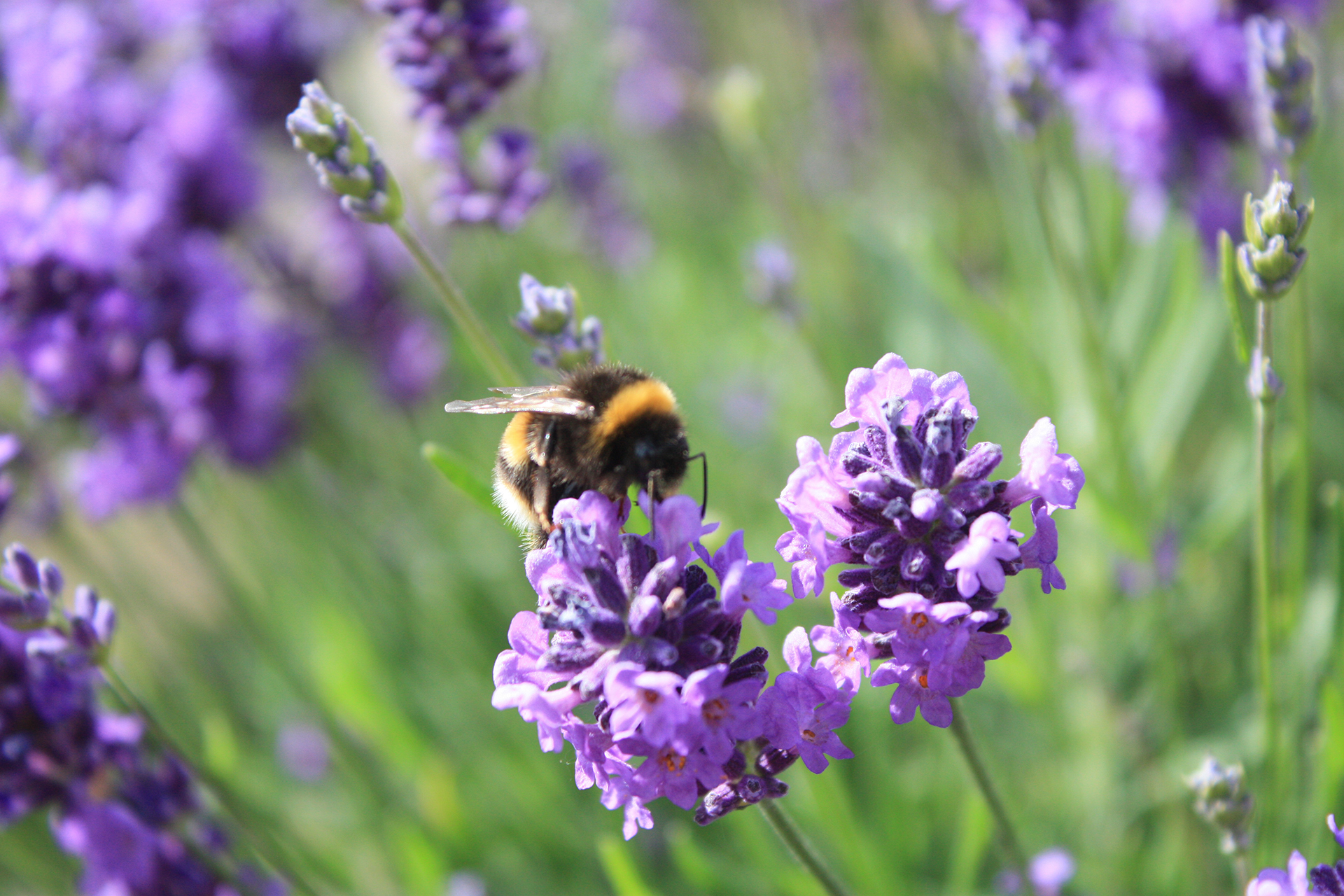
‘No garden is complete without lavender, a stately mauve-flowered perennial,’ says Professor Dave Goulson, founder of the Bumblebee Conservation Trust and author of The Garden Jungle. He recommends a variety called ‘Gros bleu’; Lavandula x intermedia.
This is a Mediterranean fragrant flower, but not invasive so it is completely safe to grow lavender in your garden for those living in Zones 5–8. It can be started from seed, and it does self-seed, but it is slightly unreliable, very slow growing, and may not come out true to form, so growing from cuttings is the safest option.
Bees, hoverflies and wasps will certainly thank you for planting these beautiful, perennial plants for pollinators and you’ll be rewarded with beautiful flowers and a garden alive with buzzing, fluttering insects.
4. Coneflower – echinacea
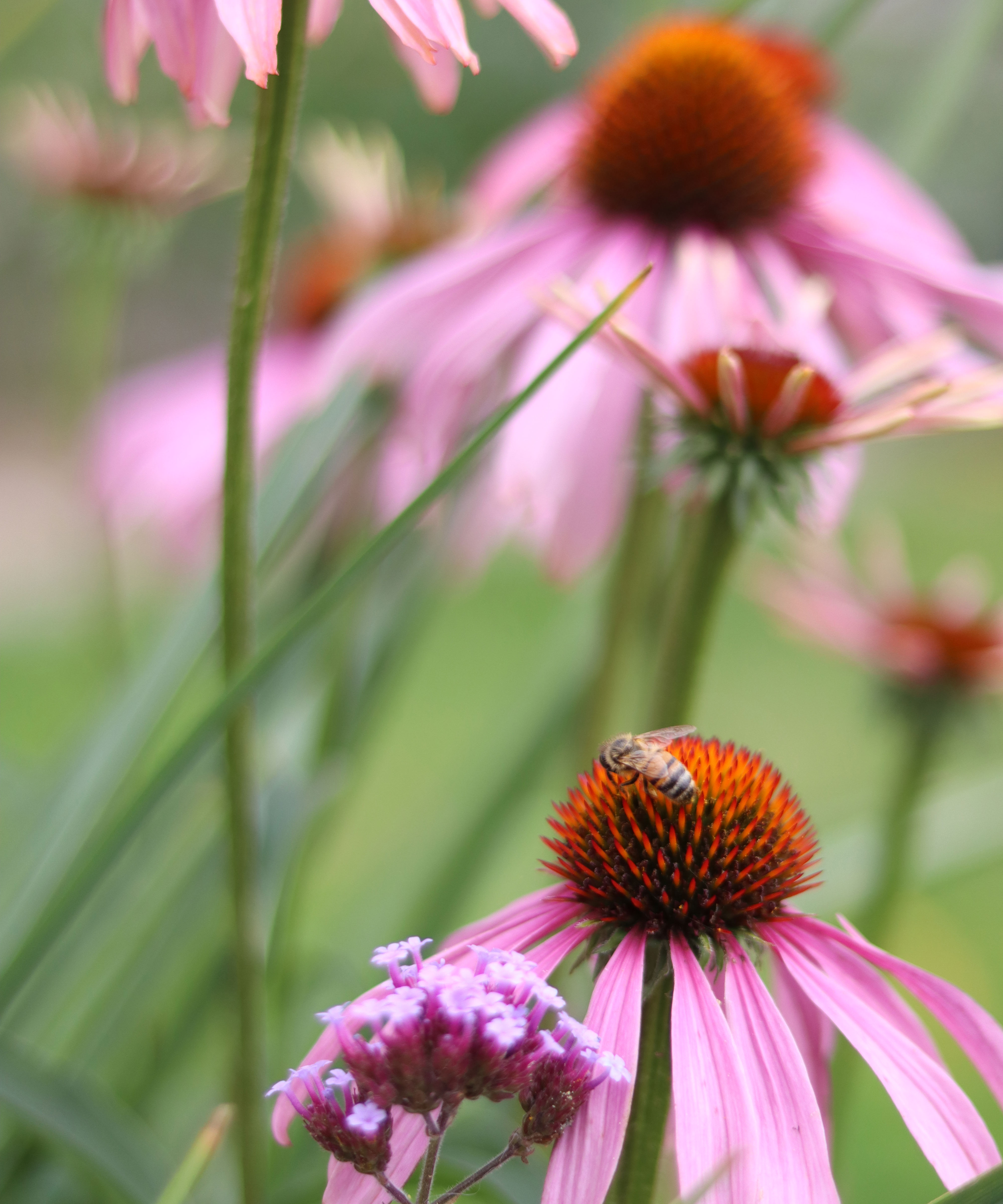
Coneflower, or echinacea, are a beautiful and popular wildflower native to central and eastern US. They are a great plant for a butterfly garden and are also loved by bees, creating another dimension to their flowering display. The seeds from these flowers are a high energy snack for birds in the fall, and they are among the deer resistant plants due to their fragrance and spiny center.
Coneflowers are a perennial plant so they will come back every year and will go into dormancy over winter. They are easy to grow from seed in spring and are available in lots of different colors, but the native species is the pinkish purple Echinacea purpurea.
To grow from seed, sow thinly in a tray and sprinkle with a thin layer of compost, enough to cover the seeds. Keep the potting compost damp until the shoots appear. When they have true leaves, separate out the seedlings into their own modules and grow them on. They are slow growing, so sow them early in the season, somewhere warm like a windowsill.
When the seedlings are a few inches tall they can be planted out in a sunny spot in the garden, in well drained soil. You will be able to enjoy these late summer flowers and their visitors for many years to come.
5. Goldenrod – Solidago

Goldenrod is a particularly nectar-rich herbaceous perennial that is a great late food source for fall pollinators. The spikes of bright yellow flowers of these plants for pollinators attract bees, flies, wasps, beetles, and butterflies, making them a great choice for sensory garden plants.
The native solidago will not become invasive and is often found in woodlands, prairies, and even coastal habitats.
Goldenrod is easy to grow from seed in Zones 3–8. Seeds can be sown directly into the garden around 6 weeks before the last frost date. Goldenrod will prefer well drained soil and full sun but will grow in light or partial shade.
Sow seeds once and enjoy years of beautiful flowers and a buzz of life in summer and early fall.
6. Giant Hyssop – Agastache foeniculum
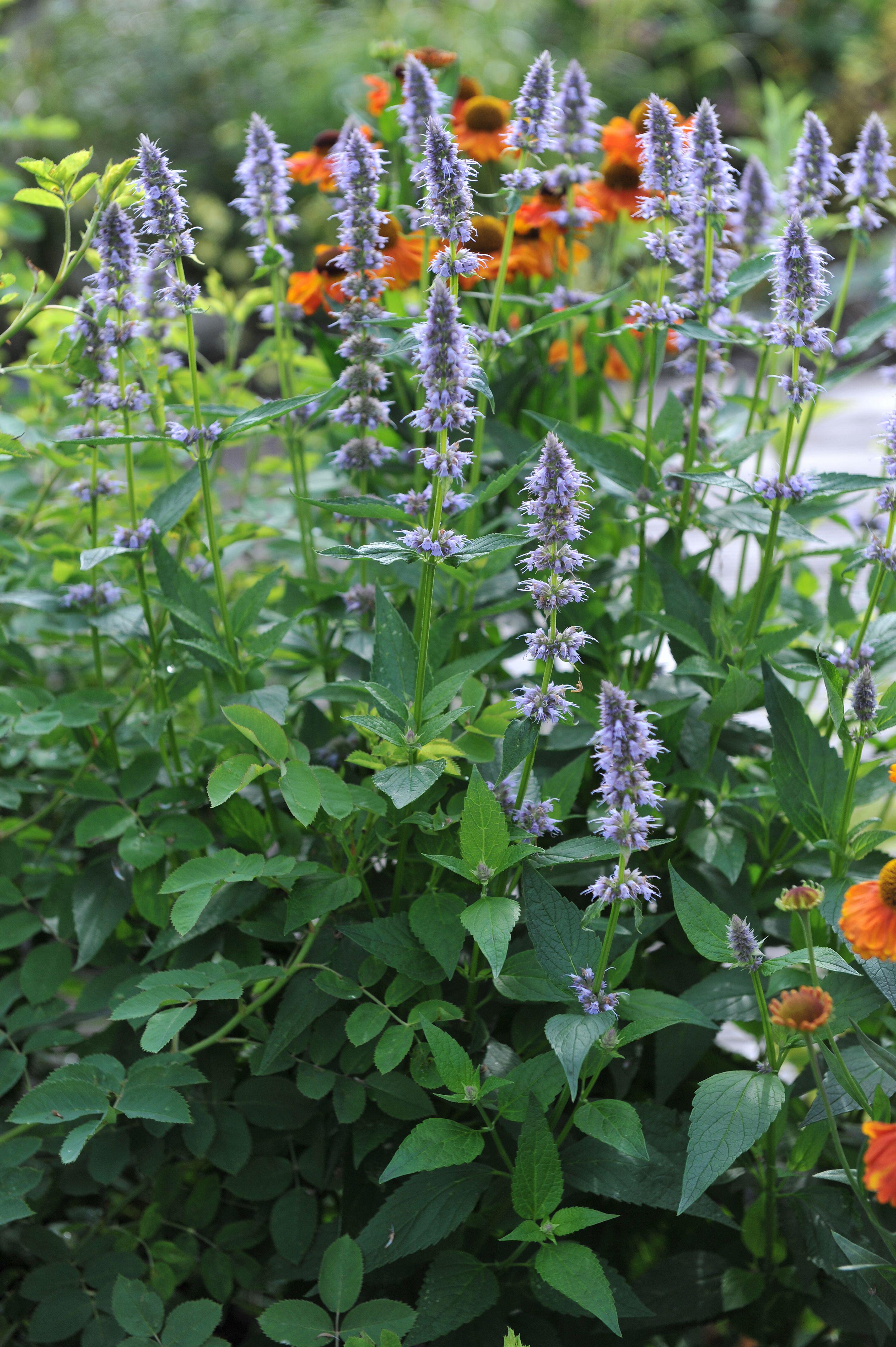
Giant hyssop is a beautiful evergreen herb from the mint family. Favoured for its scent and its herbal properties, this aromatic herb has beautiful bright blue flowers at the top of the flower spikes.
Native to the upper Midwest, great plains, and part of Canada, it is a popular plant for pollinators in Zones 4–9 and particularly for providing nectar to bumblebees, honeybees, leaf cutter bees, hummingbirds, butterflies, moths, and skippers.
Giant hyssop is easy to grow from seed in spring, or from softwood cuttings in summer. Seeds can be sown directly into the garden on bare soil after the last frost has passed. Alternatively, you can take softwood cuttings from a parent plant, or dig up and divide a mature plant.
7. Aster
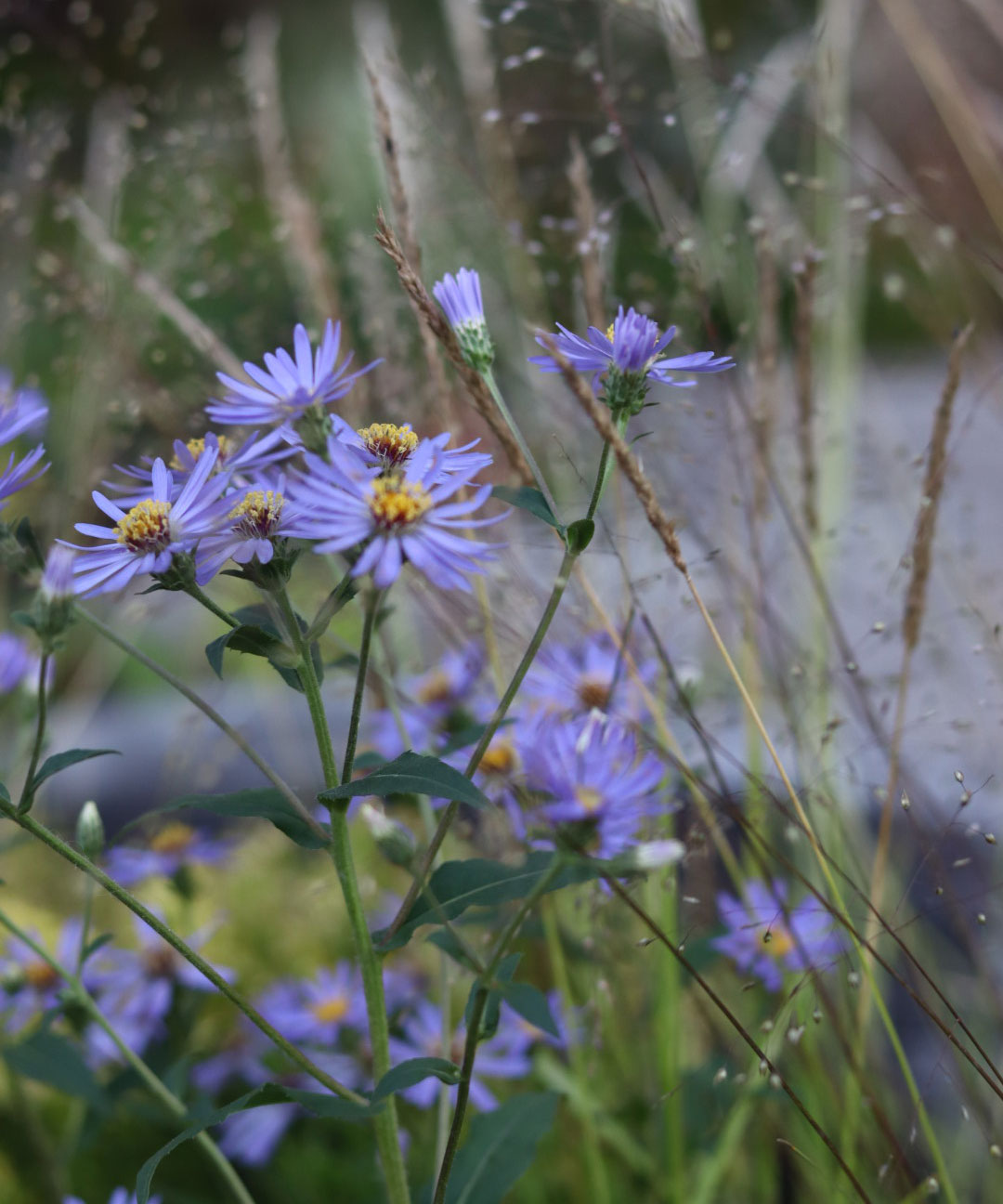
Asters are bright, colorful flowers from the daisy family. They are great for birds with their soft, fluffy seed heads in fall, and excellent plants for pollinators. Aster flowers are enjoyed by short and long tongued bees, hoverflies, and beetles.
A popular cottage garden plant, asters are perennials and can be grown from seed in Zones 3–8. Scatter the seeds in a tray of potting compost and cover them about quarter of an inch deep. Keep the tray somewhere warm and keep the compost moist until the seedlings sprout. When they have their first true leaves, they can be separated into their own modules and placed somewhere a little cooler.
Asters enjoy full sun and well-draining soil, but they will grow in light shade as long as they are not crowded. Enjoy their bright displays from late summer to early fall.
8. Blazing star – Liatris spicata
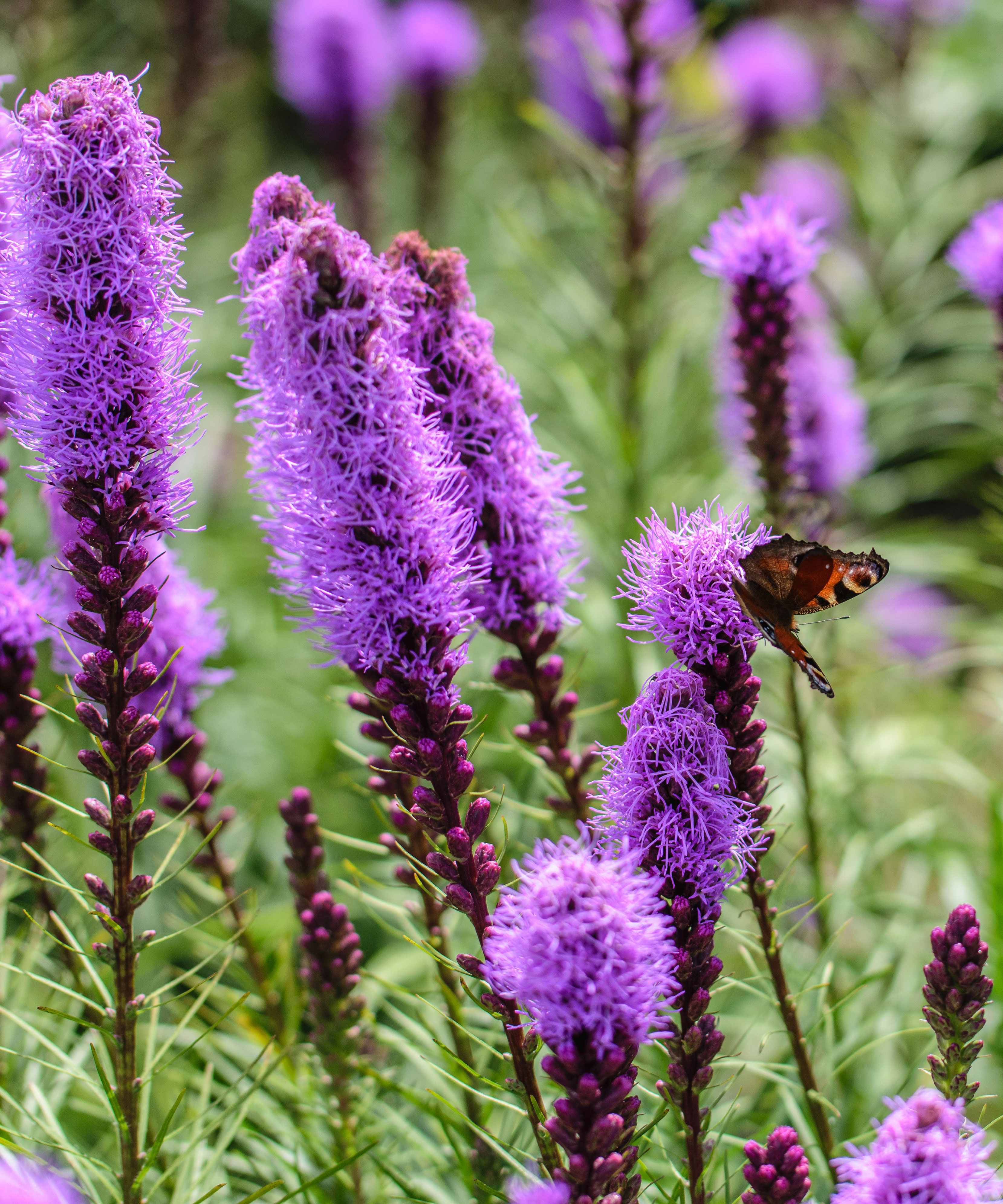
This native prairie plant has tall spikes of purple-pink flowers and is very attractive to a lot of pollinators, including bees, hoverflies, wasps and butterflies. As a perennial, you will be able to enjoy its floral displays and the benefits for pollinators in your garden for many years.
Blazing star can be grown from corms for faster growth, or from seed if you have the patience. Seeds can take around 6 weeks to germinate. Sow seeds in early spring after storing them somewhere cold – like in the refrigerator – for around a week.
Scatter seeds thinly in a tray of well-draining potting compost. Bury them about a quarter of an inch down and keep the medium damp, being careful not to overwater. Place the tray somewhere warm and plant out the seedlings when they are big enough to handle.
9. Foothill penstemon – Penstemon heterophyllus
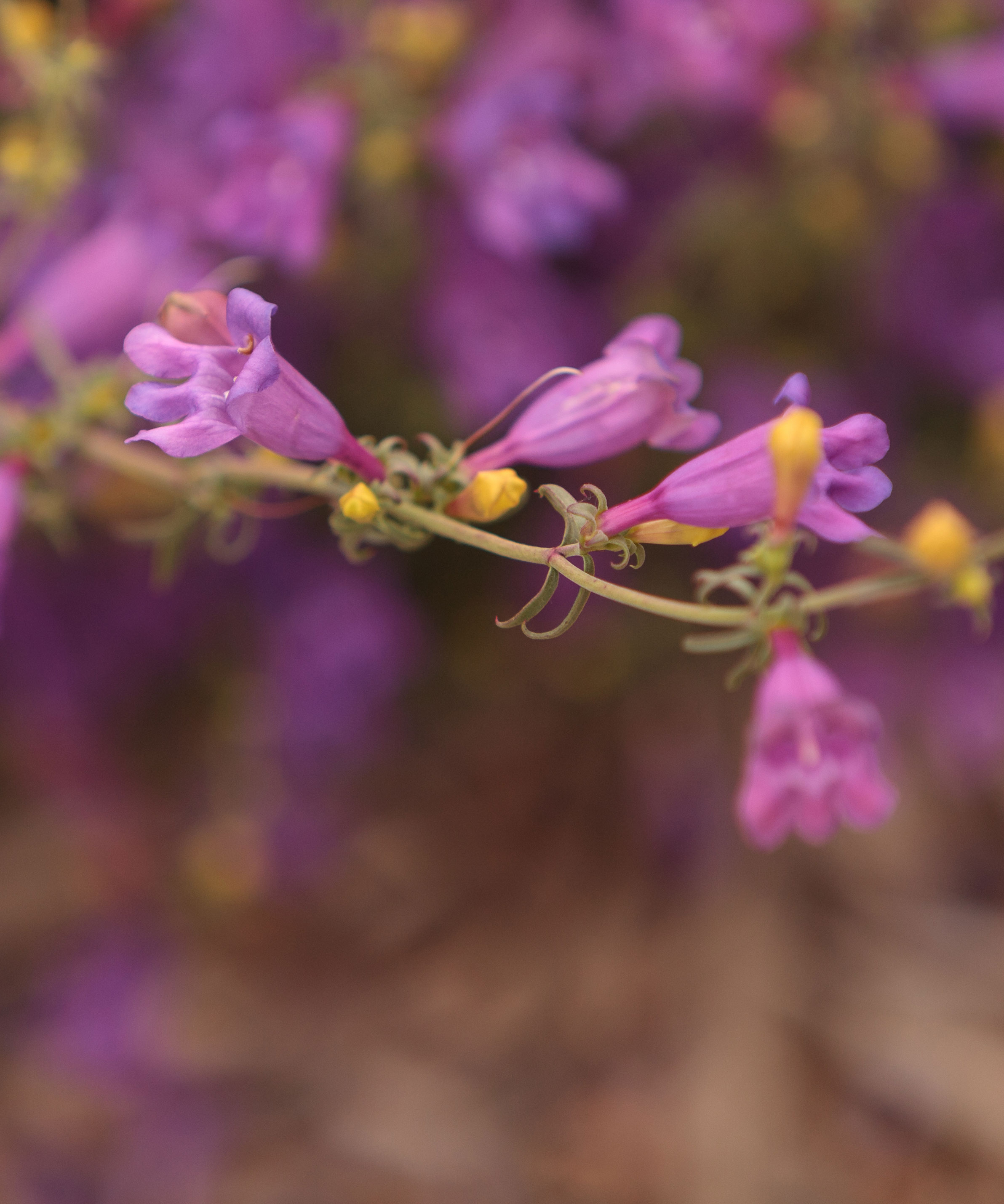
Foothill Penstemon is a beautiful wildflower native to California and suited to Zones 7–10. Its showy blueish purple flowers are popular with butterflies, long-tongued bees, hummingbirds, and other birds.
This plant for pollinators is drought resistant and enjoys very free draining soils. It is a good choice for coastal garden ideas and rock gardens.
Foothill penstemon can be grown from seed, softwood, or ripe growth cuttings or by dividing mature plants in late fall or early winter. Dividing or growing from cuttings is the favored method as the seeds can be tricky to germinate.
Take softwood cuttings in early summer, or ripe growth cuttings in midsummer.
10. Sweet Joe-pye weed – Eutrochium purpureum
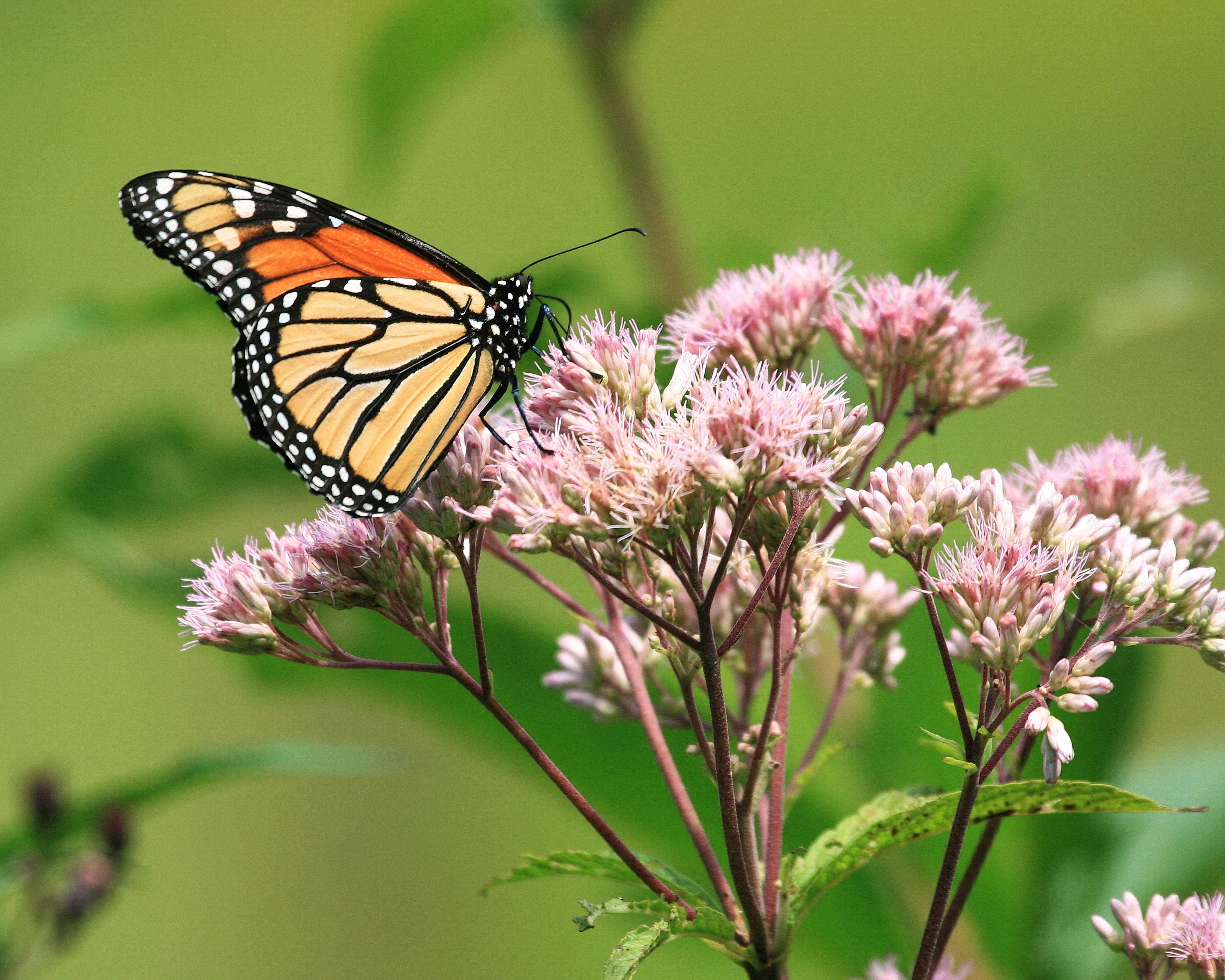
Sweet Joe-pye weed is a herbaceous perennial native to many parts of the US and highly favoured for its medicinal properties. Its large clusters of tiny pink and white flowers create a beautiful display in a garden and are easy to care for, too.
These plants for pollinators are magnets for bees and butterflies, attracting the stunning tiger swallowtail and monarch butterflies among others.
Sweet Joe-pye weed is not particularly easy to grow from seed, so grow from cuttings if possible. Softwood cuttings should be taken in spring. Cut off a 4-to-6-inch stem with a sharp blade and remove the leaves from the lower leaves. Put the cutting into a pot of well-draining potting compost and keep it moist. It is a good idea to create a tent over the pot with a clear plastic bag to retain the moisture. Roots should set in about 6 weeks.
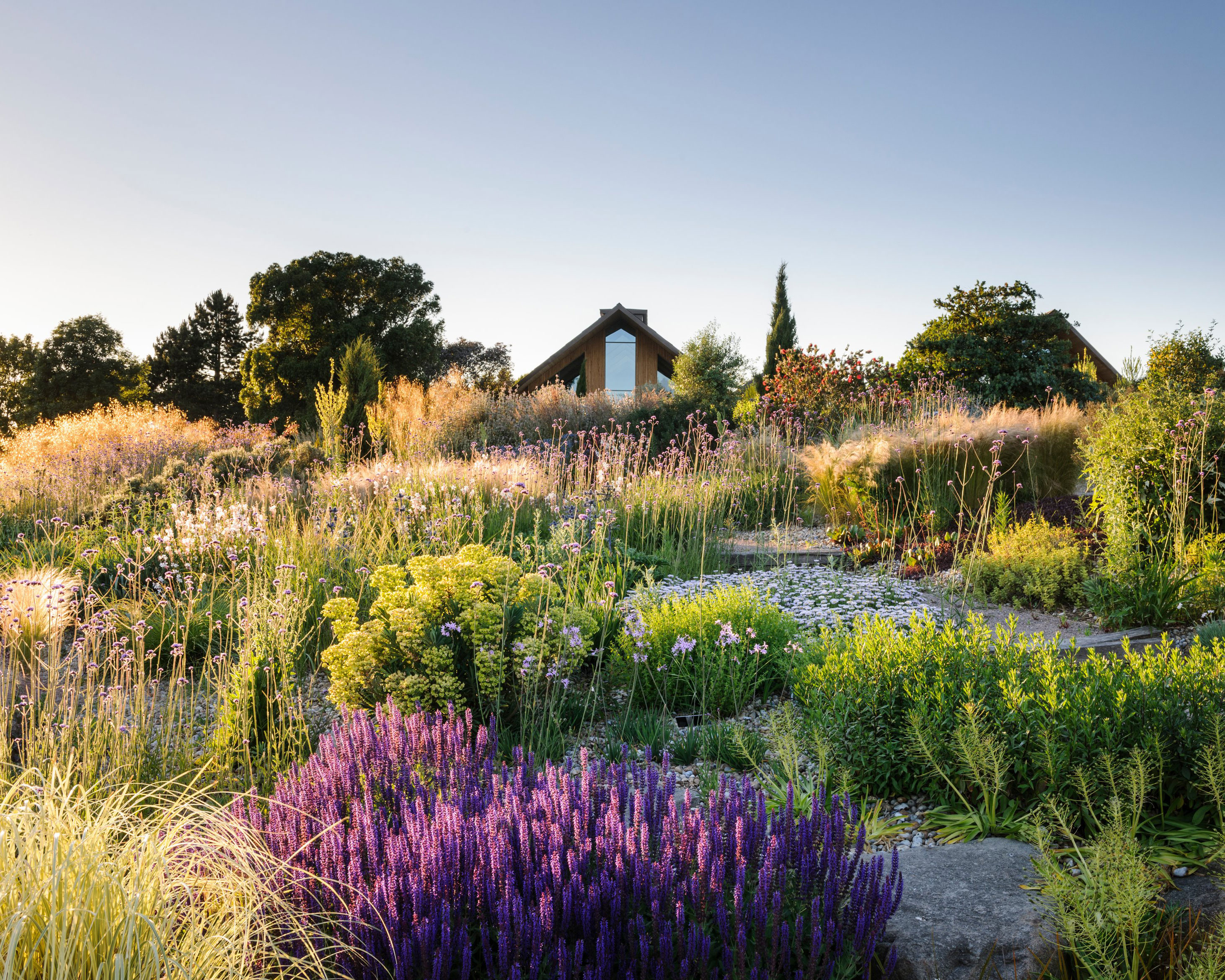
What flowers attract the most pollinators?
There are many plants that attract pollinators, and many different pollinators that will be attracted to different plants at different times. For example, hellebores are some of the best plants for early spring pollinators at the cold part of the growing season.
It is better to choose native plants, as they will be easily recognisable to our pollinators, and they may also be a food source for caterpillars and beetle larvae.
Try to choose flowers with a clear centre. If you can see the central parts of the flower, and they are not covered by petals, they will be easier to access for most pollinators and therefore more attractive.
‘Bees love native wildflowers, flowering herbs, berries and many flowering fruits and vegetables,’ says Anita Deeley of Beverly Bees.
Naturalistic planting designs can include many plants for pollinators.
‘Dandelions, clovers, loosestrife, milkweed, goldenrod and other flowering weeds are very important food sources for bees,’ she continues. ‘In areas filled with green sprawling lawns, dandelions and clovers are vital plants for a bee’s survival. Let them grow and flower in your yard and you will soon have your own personal honeybee sanctuary.’

What are the top 3 pollinators?
Bees are an incredibly important pollinator and Bayer estimate that bees and flies, such as hoverflies, together pollinate around $235 and $577 billion worth of crops in the US alone annually.
Bees are certainly important pollinators and the top 3 pollinators globally, according to the Native Pollinators in Agriculture Project are all types of bees – wild honeybee, managed honeybee and bumblebees.
However, different plants have different pollinators. White night scented plants , such as Jasmine are often pollinated by moths, while long tubular flowers are often pollinated by butterflies or a favorite flowers that attract hummingbirds.
It’s important not to overlook other pollinators while catering for them in our garden – the more variety we can have the better it is for our gardens and for us.
What are pollinators?
Pollinators come in many shapes and sizes, but they are insects, birds or animals that transport pollen from one flower to another. This process is called cross-pollination and allows the plants to “breed” with one another to produce strong, healthy seeds with good genetic diversity.
Most commonly when we think about pollinators we think of insects – and for good reason because most pollinators are insects. Bees, wasps, butterflies, moths, hoverflies, beetles, and flies are all important pollinators.
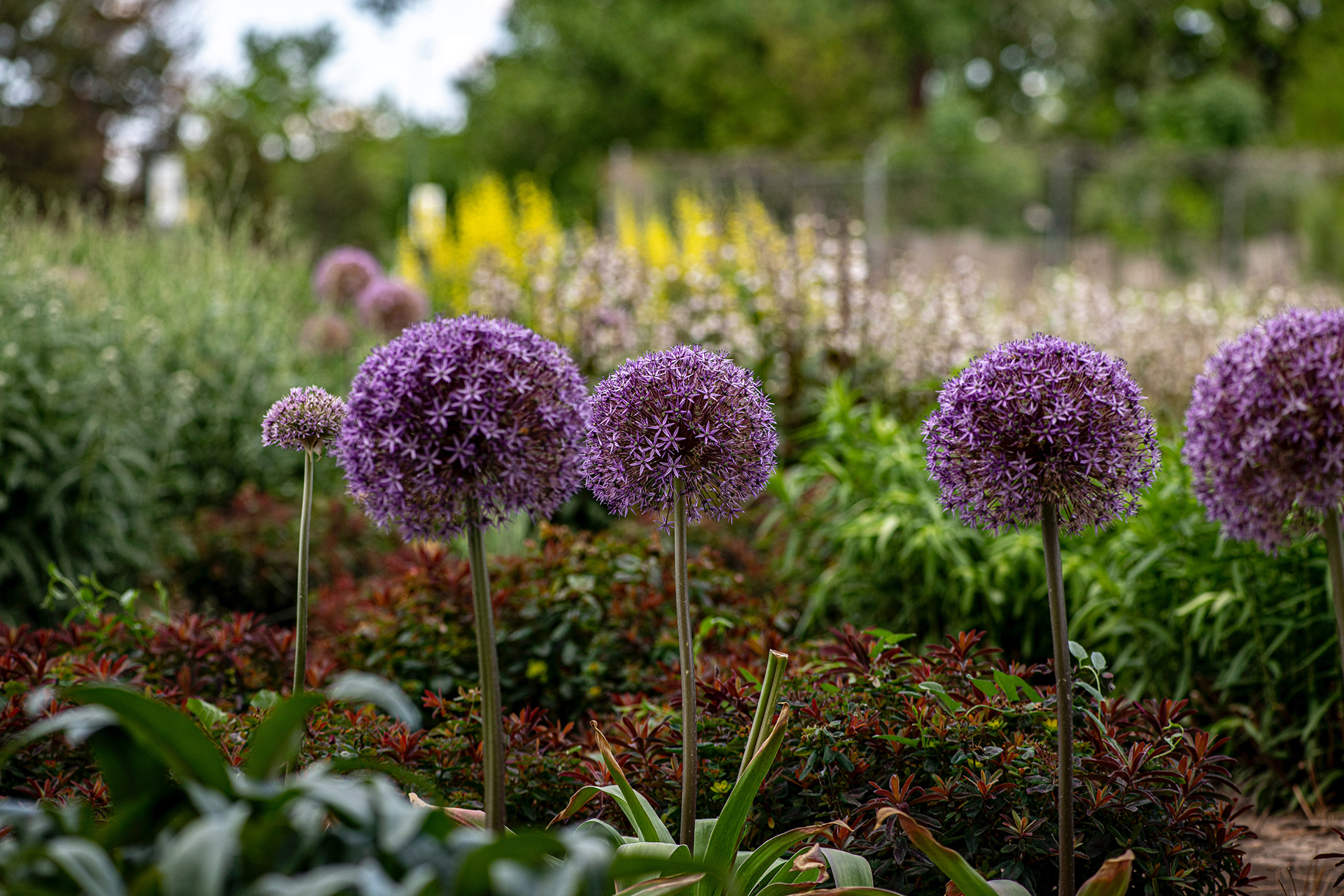
How can I attract pollinators to my vegetable garden?
A great way to draw pollinators as part of your vegetable garden ideas is to let annual vegetable plants go to flower. Crops such as like broccoli, cauliflower, kale, chard, and carrots are very attractive to pollinators. If we can leave these while they flower, and harvest them once they are done – and after collecting the seeds for next year – we will be adding plenty of value for our pollinators very easily.
Planting flowers and herbs in our vegetable garden is also important. If we can set aside a small patch for wildflowers or herbs, it will be a huge help to our pollinators.
Sign up to the Homes & Gardens newsletter
Design expertise in your inbox – from inspiring decorating ideas and beautiful celebrity homes to practical gardening advice and shopping round-ups.

Becky is a freelance writer, blogger, and podcaster. Her blog, Sow Much More and her podcast The Seed Pod are aimed at making organic gardening more accessible and encourage others to grow their own food.
-
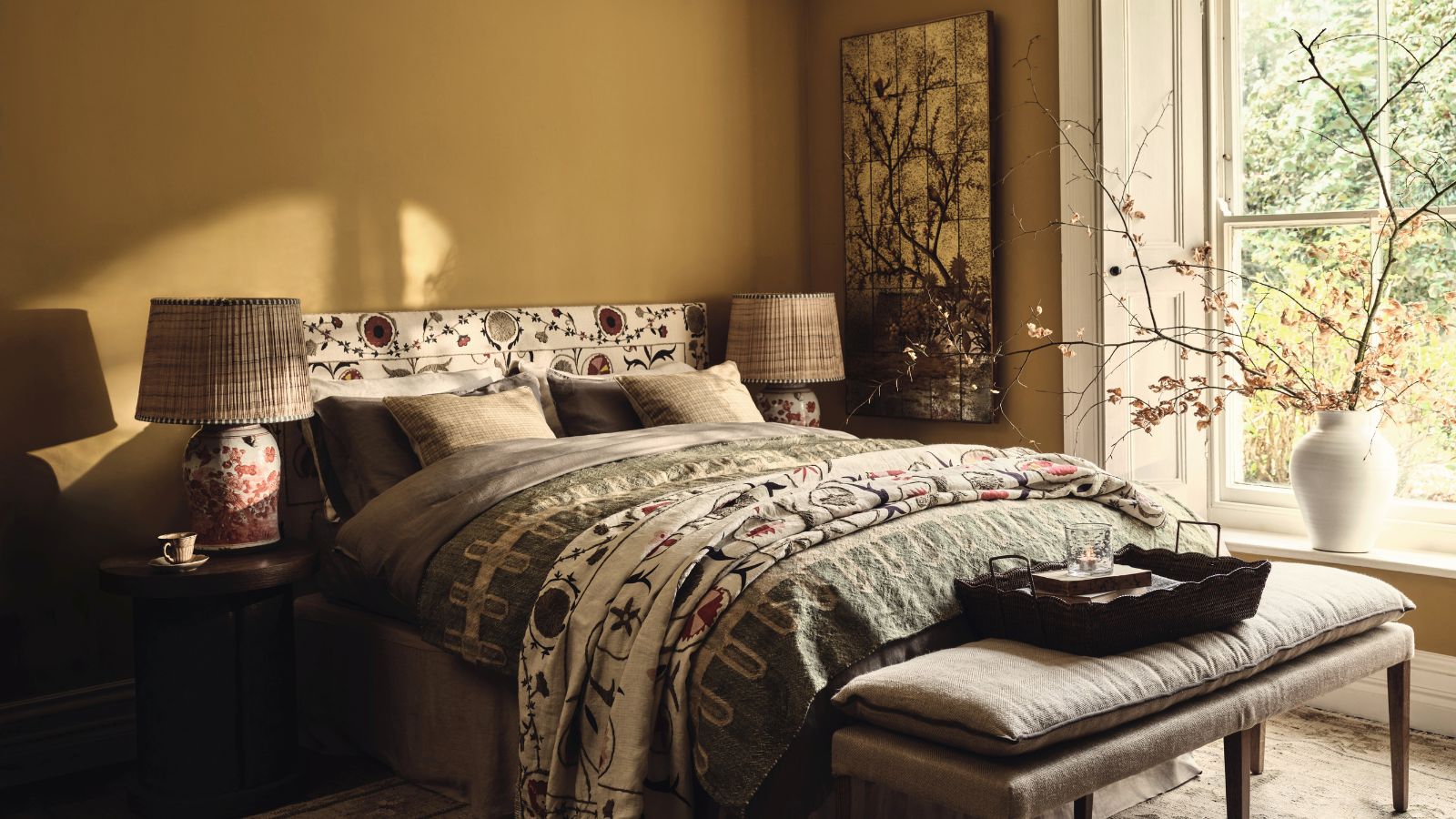 I gave the ‘try-for-five’ method a go in my small home – it's a brilliantly easy way to beat chore procrastination in seconds
I gave the ‘try-for-five’ method a go in my small home – it's a brilliantly easy way to beat chore procrastination in secondsThis method is great for those with executive dysfunction
By Chiana Dickson Published
-
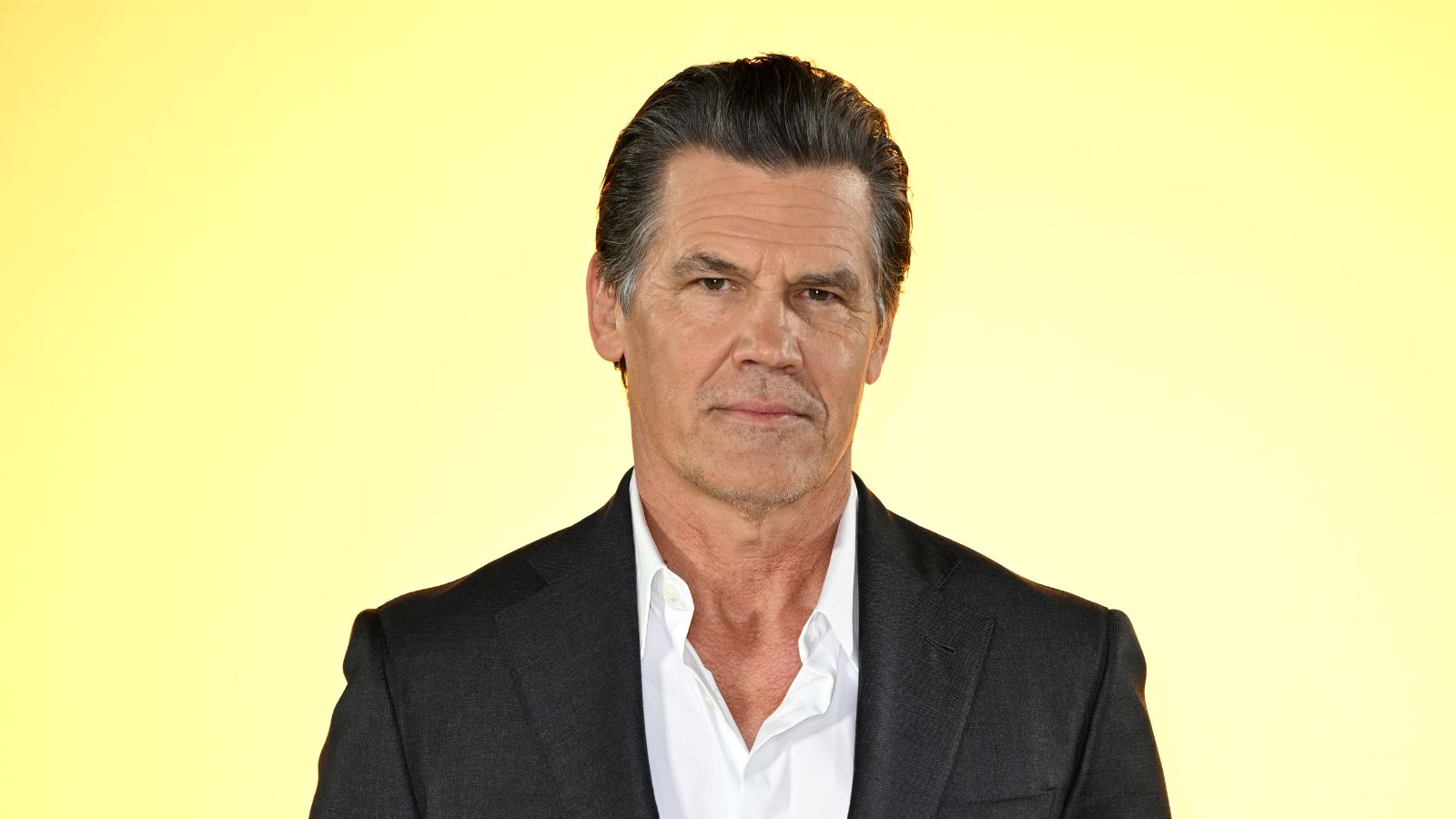 Josh Brolin’s maximalist living room: love it or hate it? Our readers were split, but where do you stand on this memorabilia-packed space?
Josh Brolin’s maximalist living room: love it or hate it? Our readers were split, but where do you stand on this memorabilia-packed space?Maximalism has a way of dividing opinions among design aficionados, and few spaces are quite as decisive as the actor's unique, yellow living room
By Megan Slack Published